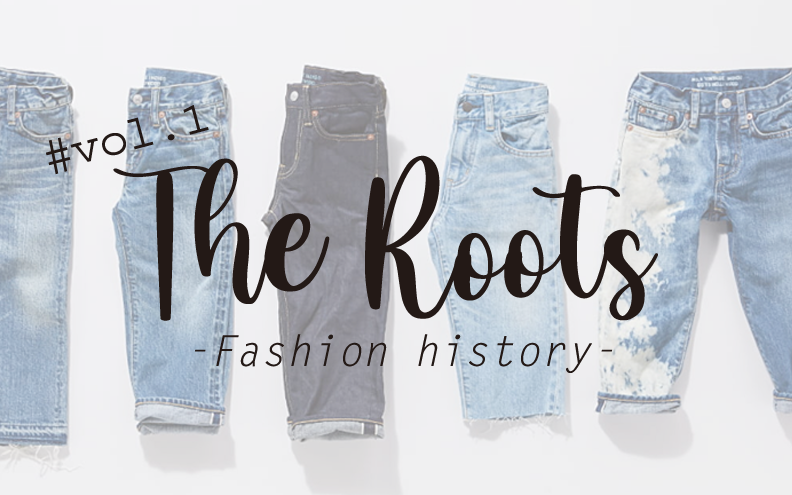StyleRecipe Special Edition.
Introducing the new series “The Roots” starting this season!
“Just as people have a history, fashion does too. By understanding its roots, we can enjoy fashion on a deeper level.” With this theme, we will introduce recommended items along with the history of fashion.
For our inaugural feature, we’re highlighting [Denim Jeans]!
Now a staple in fashion, everyone likely owns at least one pair of “denim jeans.” They have also firmly established themselves as a classic in children’s clothing.
What’s the difference between denim and jeans, you ask? To put it simply: “Denim” = a type of fabric. “Jeans (also known as G-pants in some regions)” = pants made using the denim fabric.
So, why call it “denim”? In the 19th century, in the southern part of France, specifically the Nîmes region, cotton cultivation was prevalent. Many cotton products produced there were exported abroad, one of which was a fabric known in French as “serge de Nîmes,” meaning “serge from Nîmes.” Americans adapted the pronunciation to something more comfortable for them, changing “de Nîmes” to “denim.” That’s how the term “denim” is believed to have originated.
Next, regarding “jeans,” interestingly, the origin of the term “jeans” also comes from a place name, just like “denim.”
The location is Genoa in Italy. Around the 17th century, Genoa thrived as a major exporting nation, distributing goods worldwide. According to one theory, American folks referred to the pants worn by sailors coming from Genoa as “genes” or “genois,” implying they were made in Genoa. Over time, the pronunciation shifted, and they became known as “jeans.”
Speaking of denim jeans, the most widely known story is about Levi Strauss, the founder of the now-famous American denim brand, Levi’s Jeans. He originally designed them as sturdy pants that could be worn in any environment, particularly catering to coal miners working during the Gold Rush. While many are familiar with this narrative, it’s indeed surprising to learn that both “denim” and “jeans” trace their origins back to European place names.
Denim jeans, designed as workwear, are functional and suitable for daily wear. As they are worn in, the stiff denim gradually conforms to the body, revealing the unique fading and wear marks characteristic of indigo dye. In this way, each person creates a pair of jeans that, over time, feels as unique and tailored as custom-made clothing.
From wide and slim to baggy and distressed, there’s a vast range of styles available in children’s clothing. This season, too, offers a wide assortment of denim jeans. We encourage you to find that one pair that’s uniquely yours.






